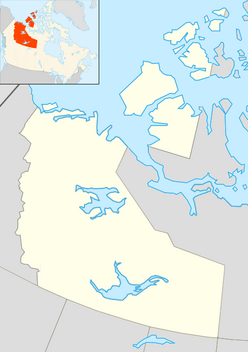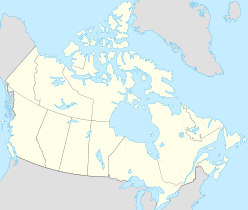Tunnunik impact crater facts for kids
| Prince Albert impact crater | |
| Impact crater/structure | |
|---|---|
| Confidence | Confirmed |
| Diameter | ~25 km (16 mi) |
| Age | ~130–350 million years |
| Exposed | Yes |
| Location | |
| Location | Prince Albert Peninsula |
| Coordinates | 72°28′N 113°56′W / 72.467°N 113.933°W |
| Country | Canada |
| Province | Northwest Territories |
The Tunnunik impact crater is a huge bowl-shaped hole on Earth. It was made when a space rock, called a meteorite, crashed into our planet a very long time ago. This amazing crater is found on Prince Albert Peninsula in the northwestern part of Victoria Island. This island is in Canada's Northwest Territories.
Contents
What is the Tunnunik Crater?
The Tunnunik crater is about 25 km (16 mi) wide. That's like driving across a medium-sized city! It was once known as the Prince Albert Impact Crater. Scientists have now officially confirmed it as a real meteorite impact site. It is also Canada's 30th known place where a meteorite has hit.
How Was the Tunnunik Crater Found?
This giant crater was discovered in 2010. Two scientists found it during a flight over the area. They were Brian Pratt, a geology professor, and Keith Dewing from the Geological Survey of Canada. They were doing an aerial survey, which means looking at the land from an airplane.
How Old is the Tunnunik Crater?
Scientists believe the Tunnunik crater formed a very long time ago. They estimate it happened between 130 and 350 million years ago. This means it was created when dinosaurs were just starting to roam the Earth!
What Caused the Impact?
The crater was likely made when a large space rock hit the Earth. This rock, called a meteor, might have been a few kilometers (or miles) wide. When it crashed, it made this huge hole in the ground.
Why is the Tunnunik Crater Important?
Studying places like the Tunnunik crater helps scientists learn more about our planet. The land inside these craters can look a lot like other rocky planets, such as Mars. By studying Tunnunik, scientists can better understand the geology (the study of Earth's rocks and land) of these distant worlds.



